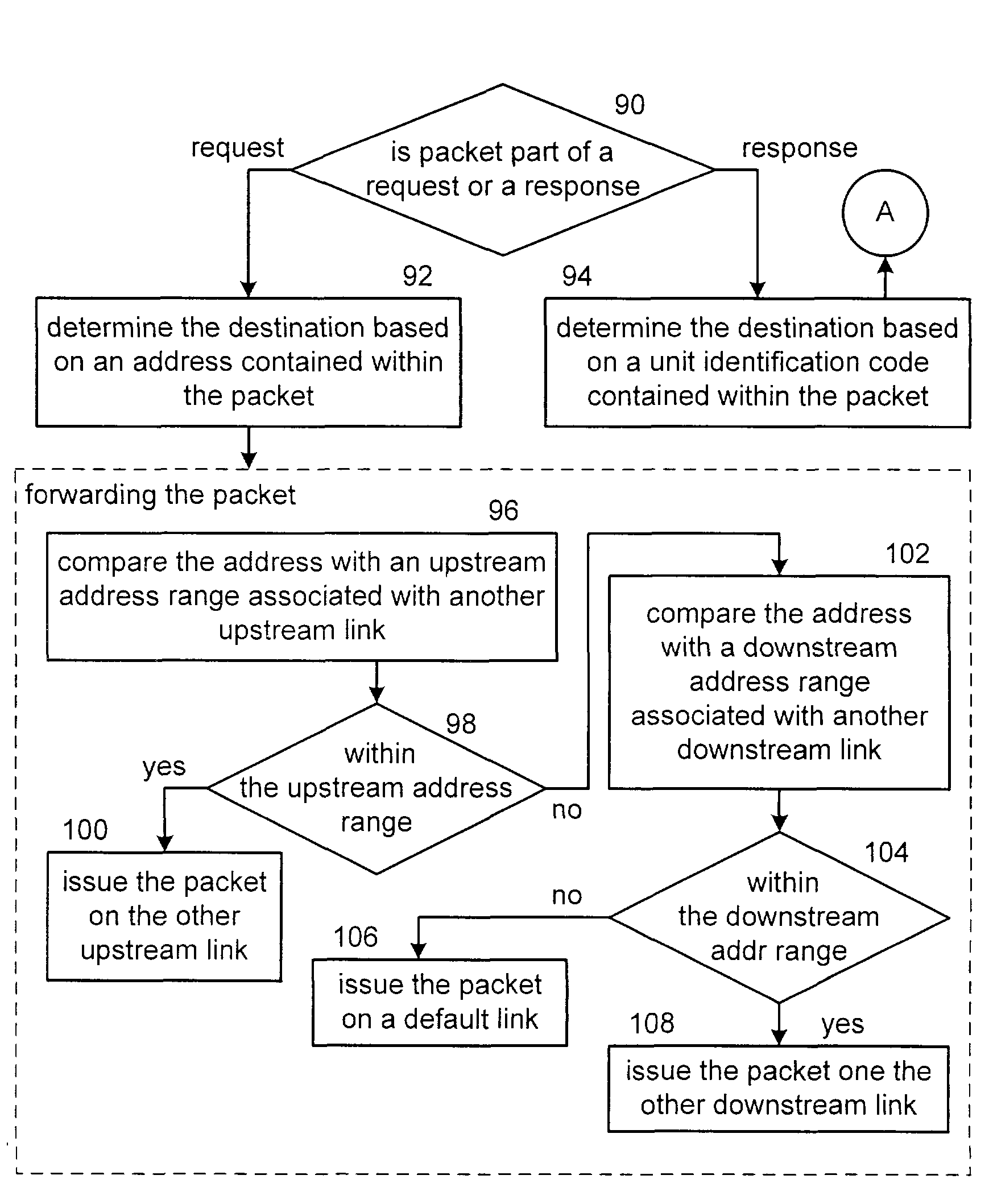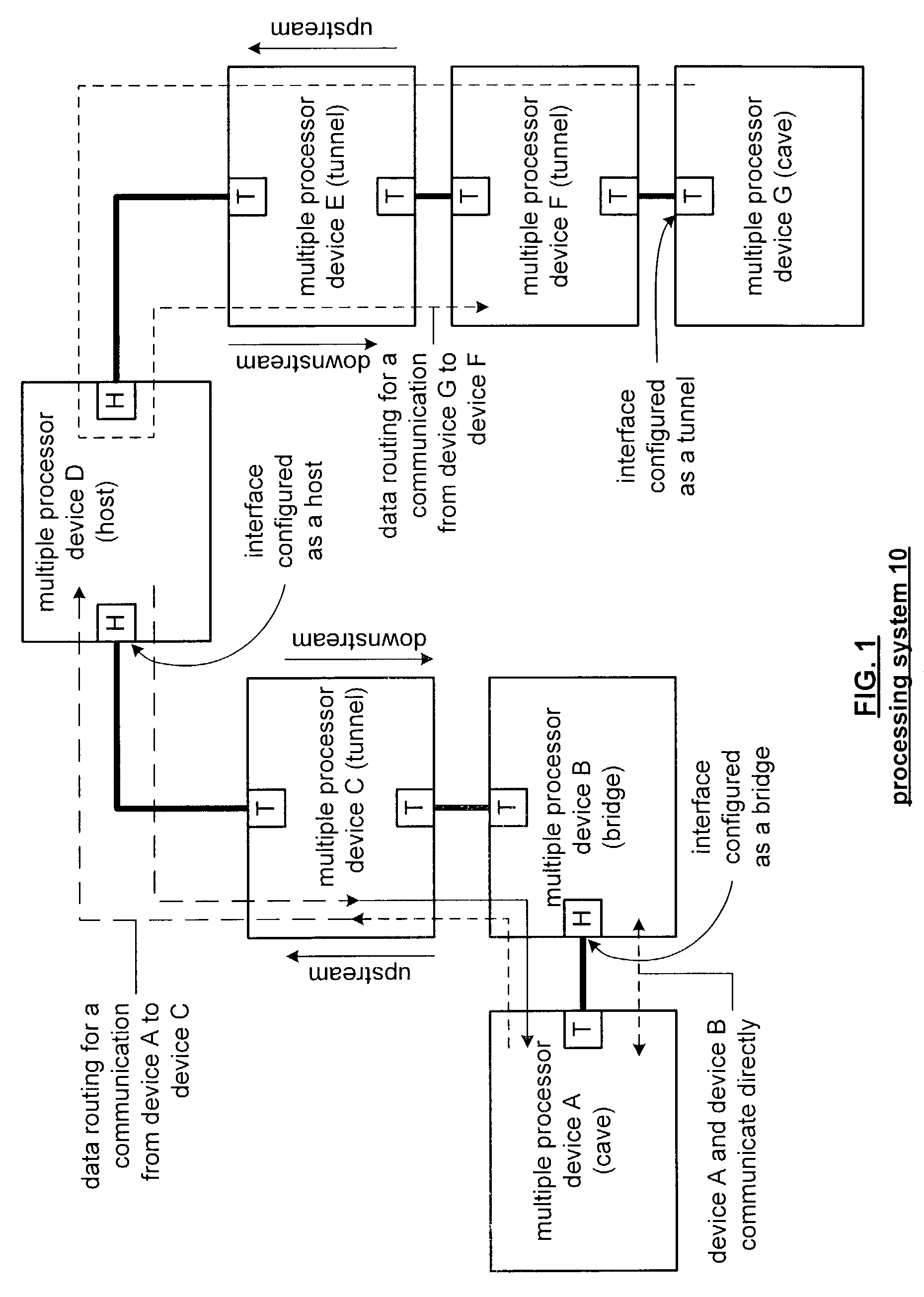Smart routing between peers in a point-to-point link based system
a point-to-point link and peer technology, applied in the field of data communication, can solve the problems of significant operational difficulties in coordinating the operation of multiple processors, significant processing capability and significant memory capacity, and network switches and web servers often times require more processing and storage capacity
- Summary
- Abstract
- Description
- Claims
- Application Information
AI Technical Summary
Problems solved by technology
Method used
Image
Examples
Embodiment Construction
[0023]FIG. 1 is a schematic block diagram of a processing system 10 that includes a plurality of multiple processor devices A-G. Each of the multiple processor devices A-G include at least two interfaces, which, in this illustration, are labeled as T for tunnel functionality or H for host or bridge functionality. The details of the multiple processor devices A-G will be described in greater detail with reference to FIG. 4.
[0024]In this example of a processing system 10, multiple processor device D is functioning as a host to support two primary chains. The 1st primary chain includes multiple processor device C, which is configured to provide a tunnel function, and multiple processor device B, which is configured to provide a bridge function. The other primary chain supported by device D includes multiple processor devices E and F, which are each configured to provide tunneling functionality, and multiple processor device G, which is configured to provide a cave function. The process...
PUM
 Login to View More
Login to View More Abstract
Description
Claims
Application Information
 Login to View More
Login to View More - R&D
- Intellectual Property
- Life Sciences
- Materials
- Tech Scout
- Unparalleled Data Quality
- Higher Quality Content
- 60% Fewer Hallucinations
Browse by: Latest US Patents, China's latest patents, Technical Efficacy Thesaurus, Application Domain, Technology Topic, Popular Technical Reports.
© 2025 PatSnap. All rights reserved.Legal|Privacy policy|Modern Slavery Act Transparency Statement|Sitemap|About US| Contact US: help@patsnap.com



